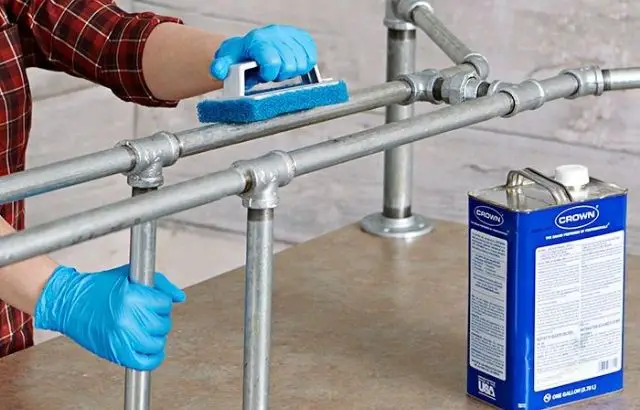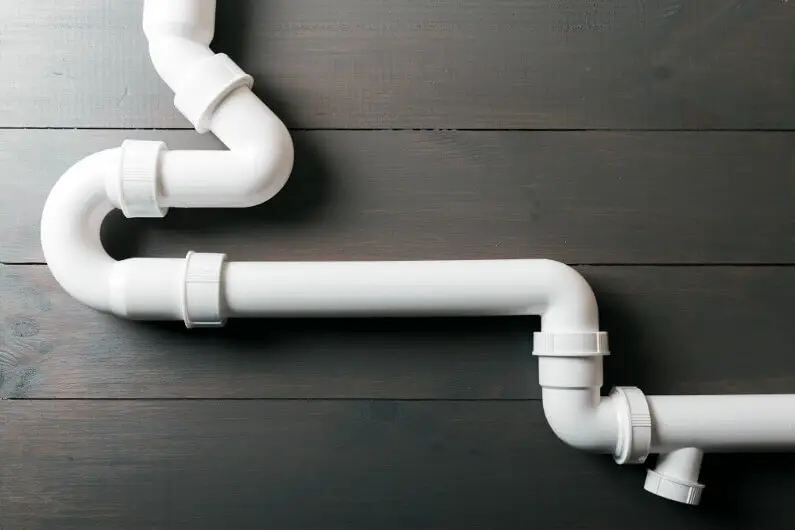As a homeowner, understanding the water system within your property is essential, especially when tapping into the main water line. The main water line is responsible for delivering water to your home, and occasionally, you may need to tap into it to make repairs or upgrades to your plumbing. Let’s see how to tap into the main water line.
Tapping into the main water line requires careful consideration, knowledge, and the ability to avoid damaging the system or causing a water outage in your neighborhood:
- Determine if it is feasible to tap into the main water line.
- Identify the location of the main water line.
- Prepare the necessary materials.
- Turn off the main water valve.
- Locate and mark the spot where the tap will be installed.
- Cut the water line using the appropriate tools.
- Install the fitting and connect the pipe to the main line.
- Turn on the main water valve and check for leaks.
- Test the system for proper operation.
- Clean up the work area.
Therefore, this Home Affluence post will discuss taping into the main water line safely and expertly.
Whether you’re a seasoned DIYer or a novice trying to carry out basic home repairs, this post will guide you through tapping into your home’s water supply system.
How To Tap into Main Water Line
1. Determine if it is feasible to tap into the main water line
Are you considering tapping into the main water line for your property? Before you begin, it is important to determine whether it is feasible. Tapping into the main water line involves connecting to your area’s water supply; a licensed plumber typically does it.
Contact your local water supplier and ask them about the process and requirements for tapping into the main water line. They will provide you with information on the necessary permits and regulations that need to follow.
Additionally, it would help if you had a licensed plumber assess your property to determine the best location for tapping into the main water line and provide a project cost estimate.
It is important to remember that tapping into the main water line can be a complex process, so working with a reputable and experienced licensed plumber is crucial.
2. Identify the location of the main water line
Suppose you plan to tap into the main water line to connect to the municipal water supply or repair an existing plumbing issue. In that case, the first step is to identify the location of the main water line.

The main water line is typically underground and can sometimes be difficult to locate without proper tools and experience.
One of the most effective means of identifying the location of the main water line is to consult with your local water utility company or hire a licensed plumber to perform the necessary inspections and measurements.
Additionally, it is important to ensure that any work done on the main water line complies with local building codes and regulations and to obtain necessary permits or licenses before beginning work.
3. Prepare the necessary materials
Gathering all the necessary materials is important before tapping into a main water line. You will need a T-fitting, which connects two pipes while allowing a third pipe to branch off.
It’s important to ensure the T-fitting is the proper size to fit your existing pipes. You will also need a water valve to redirect the water flow, a pipe cutter to cut your existing pipe, and a wrench to tighten fittings.

Additionally, you will need some Teflon tape or pipe thread compound to ensure a watertight seal.
Double-check all the materials before starting the project, as missing any of these components can cause delays and additional expenses.
By being prepared with the necessary materials, you can tap into your main water line efficiently and effectively.
4. Turn off the main water valve
Turning off the main water valve is essential when tapping into the main water line. This valve plays a critical role in controlling the water supply to your residence. Before starting the process, locate your main water valve, usually outside or where the water supply enters your home.

Once located, please turn it off by rotating the valve clockwise until it stops. Verifying that the valve shuts off is crucial by checking all the faucets or fixtures inside and outside your home to ensure no water is running from them.
Remember that turning off the main water valve is a crucial safety measure, and avoiding accidents or water damage during the tap installation is necessary.
5. Locate and mark the spot where the tap will be installed
When tapping into the main water line, locating and marking the spot where the tap will install is crucial.
It is the point of entry for the new water supply line, and it’s essential to select a location that is easily accessible and away from obstructions.

Positioning the tap requires careful planning and attention to specific guidelines to avoid mistakes, accidental puncturing or cracking of the main water line, and potential damage to your property.
To ensure a successful and safe installation:
- Thoroughly inspect the water line and check for any leaks or visible signs of damage before proceeding with the tap installation.
- Once you’ve identified the right location, use a marker to indicate the exact spot where the tap will install, and double-check the measurements to ensure precision.
- Remember, accurate interpretations and calculations are paramount for getting the job done right the first time.
6. Cut the water line using the appropriate tools
Tapping into the main water line can be daunting, but it can do successfully with the right knowledge and tools. One critical step in tapping into the main water line is cutting the water line itself.

It would help if you had the appropriate tools before commencing the process to accomplish this step.
The ideal tool for cutting the water line is a pipe cutter. A pipe cutter is a hand-held tool that uses a sharp blade to create a clean, smooth cut on the water line. Once you have the pipe cutter, place it around the section of the waterline where you intend to cut.
Carefully tighten the blade and make a smooth cut through the pipe. Remember that cutting the water line requires precision, care, and attention to detail. Follow all safety procedures and use the correct tool to avoid damaging the water line.
7. Install the fitting and connect the pipe to the main line
When tapping into a main water line, it is crucial to properly install the fitting and connect the pipe to the main line. This step requires precision and attention to detail.
Before making any connections, turning off the main water supply and completely draining the system to prevent any water from leaking or splashing out is important.

Once the main water line is safely shut off, a T-fitting or saddle valve should be installed onto the main line.
The fitting should securely tighten to ensure a leak-free connection. Afterward, you can connect the new pipe to the fitting.
A backflow prevention device during this process is highly recommended to avoid water supply contamination.
Lastly, the water supply can be turned back on while carefully checking for leaks and ensuring consistent water flow.
8. Turn on the main water valve and check for leaks
Tapping into the main water line can be intimidating for those without plumbing experience, but it can do successfully with the right tools and guidance.
Once the necessary preparations have been made, including obtaining the proper permits and shutting off the water supply to the house, it is time to tap into the main water line.

It is important to take the time to ensure that all connections have been properly secured and tightened before turning on the water valve.
Once the valve has been opened, it is important to closely monitor the connections and the surrounding area for any leaks or signs of water damage.
Any issues should address promptly to avoid potential damage and additional repairs. By following these steps carefully, tapping into the main water line can be completed safely and effectively.
9. Test the system for proper operation
Ensuring the system functions correctly before you tap into the main water line. Testing the system for proper operation will help you to identify any leaks, clogs, or other issues that could cause problems during the tapping process.
Start by turning off the main water valve and then turn on every faucet and showerhead in your home. While the faucets are running, inspect them for any leaks or signs of damage. Check the water pressure to make sure it is consistent throughout the home.
Next, inspect the water meter to ensure it works correctly, and note the current water pressure reading.
If you find any issues during the testing process, it is important to address them promptly to avoid complications later on during the tapping process.
10. Clean up the work area
If you want to tap into the main water line, ensuring your work area is clean and debris-free is important.
Not only will this help to prevent accidents and injuries, but it will also ensure that your tools and materials remain in good condition.

Before you begin, clear the area of any clutter or debris, and lay down a durable drop cloth or tarp to protect your floors.
Additionally, ensure you have all the tools and equipment, including a saw, pliers, a wrench, and a rubber gasket.
By setting up your work area properly, you can help ensure and stress-free process for tapping into the main water line.
My Opinion
Tapping into the main water line can be daunting, but it can accomplish with the right tools and knowledge.
Before beginning, one should research the local plumbing codes and safety guidelines. Additionally, having all the necessary materials to complete the process is important without interruptions or delays.
It’s always recommended to seek professional help if any doubt or confusion arises. By following these steps, homeowners can ensure a reliable water supply and avoid costly repairs.




